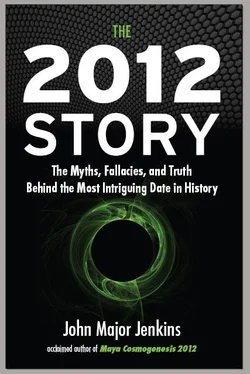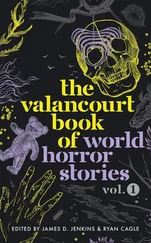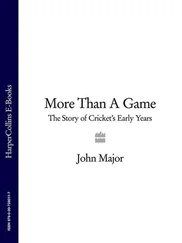Eschaton.The end state, or ultimate condition or object, that emerges at the end of time. See eschatology . Used by philosopher Henry Corbin and popularized by Terence McKenna.
Fractal.Is generally a rough or fragmented geometric shape that can be split into parts, each of which is (at least approximately) a reduced-size copy of the whole. A property called self-similarity . A mathematical fractal is based on an equation that undergoes iteration, a form of feedback based on recursion.*
Fractal time.The application of fractal geometry to time. The concept was elaborated by Terence McKenna in his Novelty Time Theory. The concept has since been adopted in various forms with varying intervals and periods by other writers.
Galactic alignment.The alignment of the December solstice sun with the dark rift in the Milky Way. This definition highlights astronomical features that are compelling to naked-eye sky-watchers, past and present. For a more technical definition, one can replace “dark rift in the Milky Way” with “galactic equator.” This alignment takes place within the boundaries of the nuclear bulge of the Milky Way, also perceptible to naked-eye observation, known as the Galactic Center.
Galactic Center.The center of a spiral galaxy. Our own galaxy’s center lies between the constellations of Sagittarius and Scorpio. Astronomers tend to conceive of the Galactic Center as a precise point, which is misleading because galaxies have slightly different gravitational, visual, and electromagnetic centers. In addition, some spiral galaxies, such as our own, have two closely connected centers. A more realistic conception, which is congruent with how the central part of the Milky Way is perceived by naked-eye stargazers, is that of a “nuclear bulge,” which is a wider and larger zone of brighter stars as compared to other parts of the Milky Way. For example, the opposite part of the Milky Way in Gemini is very thin and diffuse, as that is the direction looking out of the galactic disk.
Galactic synchronization.A term coined and a concept used by author José Argüelles, defined by Brian Swimme in his introduction to The Mayan Factor . It is related to, and perhaps developed from, the Photon Belt concept (see entry). It is astronomically unrelated to the galactic alignment.
GMT.The original Goodman-Martínez-Thompson correlation, proposed in 1927 by Thompson: JD 584285, making the cycle-ending date fall on December 23, 2012. (JD refers to the Julian Day designation.)
GMT-2. The adjusted Goodman-Martínez-Thompson correlation number, finalized in 1950 by Thompson: JD 584283, making the cycle-ending date fall on December 21, 2012.
Gnomon.A shadow-casting device, often a vertical pole, used to measure the sun’s movements through the day and year.
Gnosis.A knowing conferred by direct inner experience. See buddhi mind , Primordial Tradition .
Gnostic.A term applied to religions that cultivated direct initiatory awakening to wisdom, as opposed to obediently following exoteric dogma.
Haab.Period of 365 days used in Mesoamerican calendrics. Same as the “vague solar year.”
Hermetic.A magical and religious movement stemming from the teachings of Hermes Trismegistus. Generally, Hermetic philosophies are based on a conviction that comes from a direct initiatory experience of the deep interconnection between subjective and objective domains. The hermetic adage testifies to this: As above, so below. This refers not only to an interweaving between sky and earth, but also of microcosm and macrocosm, subjective and objective. Standard definitions of the word “hermetic” as pertaining to secrets, obscurity, and unrevealed information are superficial.
Hero Twin.Hunahpu or Xbalanque; one of the two sons of One Hunahpu in The Popol Vuh .
Hero Twin Myth.Generally, equivalent to the Creation Myth and The Popol Vuh . Specifically, pertains to the section of The Popol Vuh that involves the Hero Twins and their adventures.
Hun.One.
Hunahpu.One of the Hero Twins of The Popol Vuh . Refers to the day-sign Ahau, and therefore, as Hun-ahpu or One Ahau, to the Sacred Day of Venus.
Iconography.The study of pictographic language and image systems used to represent ideas. In the development of writing, pictographic expressions usually precede more abstract hieroglyphic or alphabetic writing.
Inferior conjunction.This occurs when a retrograde planet crosses in front of the sun on its way to becoming a morning star.
Intellectus.See noetic .
Izapa.A pre-Classic site in southern Chiapas, Mexico, near the Guatemala border. A significant ceremonial and astronomical site of the Izapan civilization that preserves some of the earliest carved portrayals of episodes from the Hero Twin myth, dated to 400 BC-50 AD. Was also involved in the formulation and adoption of the Long Count calendar.
K’awil.A deity connected with Jupiter and concepts of transcendence and transformation.
Logograph.An image that represents a word or a morpheme (the smallest meaningful unit of language). Logographs, or logograms, are commonly known also as “ideograms” or “hieroglyphs.” Strictly speaking, however, ideograms represent ideas directly rather than words and morphemes.*
Long Count calendar.A system of time counting developed sometime between 400 BC and 36 BC by the Maya that basically uses five place-value levels: the Kin (day), the Uinal (20 days), the Tun (360 days), the Katun (7,200 days), and the Baktun (144,000 days). A typical date in the Long Count, from Baktun to Kin, is written: 9.16.4.1.1. It is a cycles within cycles system, an expression of a cyclic time philosophy rather than a linear time philosophy.
Mayanism.The essential core ideas or teachings of Maya religion and philosophy. A counterdefinition of Mayanism has developed on Wikipedia that uses the term to identify popular and New Age appropriations and misconceptions of Maya ideas. This is a problematic use of the term, because it contradicts the consistently proactive meanings ascribed to analogous terms, such as “Hinduism” or “Buddhism.”
Meme.An adopted unit or element of cultural ideas, symbols, or practices transmitted from one mind to another, often unconsciously, through speech, gestures, or rituals.*
Mesoamerica.The area between Central Mexico and Central America, including Belize, Mexico, Guatemala, El Salvador, and Honduras.
Metaphoragrams.A term coined and used by Maya scholar J. Eric S. Thompson which highlights his conviction that Maya hieroglyphic writing contained and could convey much more than phonetics or even ideographs. As the term suggests, the glyphs conveyed, via metaphor, other sets of information, similar to how contemporary Maya day-keepers utilize word puns and rhymes to access a larger set of interrelated meanings. Along these lines, Thompson also said the glyphs were anagogical (see entry).
Milky Way-ecliptic cross (the cross formed by the Milky Way and the ecliptic).The two locations in the sky where the Milky Way crosses over the ecliptic. One is in Sagittarius and one is in Gemini.
Nahuatl.The Central Mexico culture and language.
Neoplatonism.The modern term for a school of religious and mystical philosophy, based on the teachings of Plato and early Platonists, that took shape in the third century AD, whose members included Macrobius and Plotinus. The earlier Middle Platonists, such as Numenius and Porphyry, also subscribed to Pythagorean ideas.
Читать дальше












